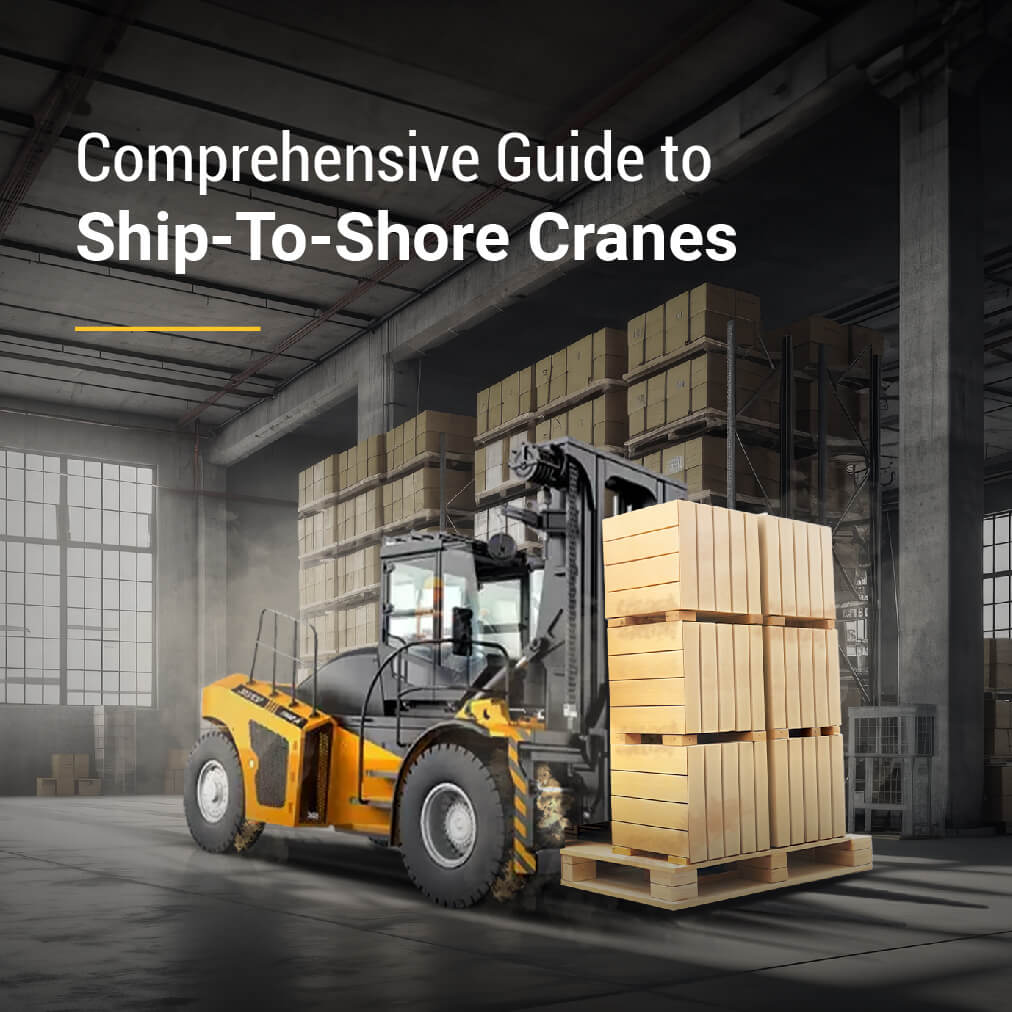Comprehensive Guide to Ship-To-Shore Cranes
Ship-to-shore cranes play an indispensable role in the smooth and efficient handling of cargo between ships and docks. These towering structures are specially designed to load and unload containers from vessels, serving as a crucial link in the global supply chain. Their primary purpose is to seamlessly transfer containers between ships and the shore, ensuring the uninterrupted flow of goods. For professionals in the maritime and logistics industries, understanding the intricacies of ship-to-shore cranes is not just beneficial but essential, as these cranes influence everything from port efficiency to overall trade operations. By the end of this guide, you'll have a comprehensive understanding of ship-to-shore cranes, empowering you to grasp their pivotal role in maritime operations and make informed decisions in your professional pursuits. Rubber-Tyred Gantry (RTG) cranes are highly versatile pieces of equipment mounted on rubber tires, enabling them to move freely within a port or terminal. They are commonly employed for stacking and relocating containers in container yards. Their mobility gives RTG cranes an edge when it comes to handling tasks that require flexibility and adaptability in managing containers. Rail-Mounted Gantry (RMG) cranes operate on fixed rails, offering stability and efficiency in container handling operations. These cranes are typically found in larger ports and terminals that deal with high volumes of cargo. RMG cranes excel at repetitive and high-volume tasks like container stacking and retrieval, making them perfect for busy terminals that require consistent performance. Fixed cranes remain stationary and are usually mounted in specific positions for tasks such as loading and unloading ships. Mobile cranes, on the other hand, offer greater flexibility as they can be relocated as needed, providing versatility for various operations within the port area. Key performance indicators (KPIs) for ship-to-shore cranes include containers moved per hour, operational uptime, and average load/unload times. Additional metrics include cycle time and energy consumption. These KPIs are tracked through automated systems and manual checks, providing real-time data for performance analysis and improvement. Optimizing crane operations involves regular maintenance, skilled operator training, and proactive repairs to minimize downtime. Best practices also include leveraging technology and automation. Modern cranes equipped with advanced control systems and automation features enhance precision and consistency, reducing human error and increasing throughput. Data analytics and machine learning further optimize movements and predict maintenance needs. Grasping the complexities and advancements of ship-to-shore cranes is essential for anyone involved in port operations. This guide has covered the types, key components, operational considerations, efficiency metrics, and safety measures related to these vital machines. Continuous learning and adaptation are crucial in this rapidly evolving field to maintain efficiency and safety. At Sany India, our Ship to Shore Cranes are engineered for exceptional performance and reliability. Designed to handle various workloads across different ports, these cranes incorporate the latest technology to enhance operational efficiency. As one of the leading ship to shore crane manufacturers, we encourage organizations to explore Sany India's offerings and see how our state-of-the-art equipment can meet your port's needs, ensuring smooth and efficient cargo handling. High-carbon silicon alloy is a new type of alloy for converter, can completely replace the carburizer and deoxidizer silicon aluminum iron added to the bottom of the package or with the steel flow, due to the large proportion of high-carbon silicon alloy, in the form of block into the molten steel can play a deoxidation effect, so that the carbon recovery rate is greatly improved (carbon recovery rate can reach more than 98%). Silicon Carbon Alloy,High Carbon Silicon Alloy,Carbon Silicon Alloy,Silicon Carbon Silicon Metal ANYANG GUOQI SILICON INDUSTRY CO.,LTD , https://www.siliconxg.com
Types of Ship-to-Shore Cranes
Rubber-Tyred Gantry (RTG) Cranes
Rail-Mounted Gantry (RMG) Cranes
Fixed and Mobile Cranes
Ship to Shore Crane Specifications
Efficiency and Productivity
Performance Metrics
Optimizing Operations
Operational Considerations
Conclusion